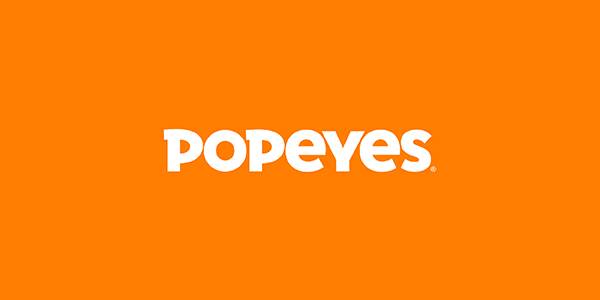OOH Advertising Statistics Every Marketer Should Know

TL;DR: OOH and DOOH Statistics You Need to Know
- 40% of agency professionals expect their clients to boost OOH spending in the coming year.
- By 2029, DOOH will represent 42.3% of all OOH ad spend.
- Programmatic DOOH ad spending is projected to reach $1.35 billion USD by 2026.
- 80% of consumers are likely to take action after seeing a funny, creative, or visually engaging OOH ad.
- In-store retail media is expected to drive 55.9% of DOOH’s total growth between 2025 and 2029.
Out-of-home (OOH) is one of the oldest, most reliable forms of advertising, but it got off to a rocky start this decade.
As commuters shifted to remote work and fewer people travelled, ad spend and audience exposure plummeted almost overnight.
Since then, OOH has rebounded as people return to offices and everyday life.
Now, thanks to technological advances, expanded digital screen networks, and improved measurement and attribution, OOH advertising is undergoing a renaissance.
Despite only 10% of US brand and agency marketers citing traditional OOH and digital out-of-home (DOOH) advertising as an investment priority in 2025, EMARKETER reports that 40% of agency professionals worldwide expect their clients to increase their OOH spending.
Whether you’re new to OOH and DOOH advertising, need to convince clients or stakeholders of its effectiveness, or simply need statistics to strengthen your next campaign pitch, read on to learn more about its remarkable growth and why marketers are flocking to it.
Stats on OOH Advertising Market Size and Growth
OOH advertising experienced a big milestone in 2024.
That year, OOH advertising revenue surpassed $9 billion USD for the first time in the medium’s history.
That momentum continued in 2025.
Although traditional media ad sales were projected to fall 11.7% YoY, a Q2 2025 report from the Out of Home Advertising Association of America (OAAA) projected that increased automotive and pedestrian traffic would help OOH reach record highs, with transit OOH advertising in particular increasing 8.9% YoY.
But DOOH advertising is driving most of its growth.
Although nearly two-thirds of OOH ad spending still goes towards traditional static formats, EMARKETER projects that share will drop below 60% in 2028, with DOOH advertising accounting for 41% of total OOH spending.
OOH Ad Spending by Media
EMARKETER forecasts that DOOH ad spending will grow at a 7.6% CAGR over the next four years.
Source: EMARKETER
Over the same period, DOOH will grow at a compound annual growth rate (CAGR) of 7.6%, while traditional OOH will inch forward only 0.7%.
By 2029, Statista predicts that 44% of global OOH ad spend will go to digital screens.
Key Takeaways for Marketers:
OOH remains one of the most resilient channels in advertising, but the real opportunity now lies in its digital evolution. As digital inventory expands and buying becomes more automated and data-driven, marketers who adopt it will be best positioned to capitalize on its growth and prove the real-world impact of every impression.
Noteworthy OOH Advertising Facts:
- According to a June report from the World Out of Home Organization, global OOH ad spending is on track to hit $49.8 billion in 2025.
- Billboards remain the dominant OOH format, with the OAAA reporting that 74.5% of revenues came from large-format ads in Q1 2025.
- EMARKETER projects a 3.6% lift in OOH ad spending for 2026, driven by political advertising around the US midterm elections and brands capitalizing on major events like the Winter Olympics.
- A study from StackAdapt and Ascend2 found that high-performing agencies and brands were significantly more likely to invest in DOOH (28%) than lower-performing organizations (19%) over the past year.
Stats on Programmatic DOOH Growth and Value
Thanks to better data integration, improved measurement, and expanded access to DOOH inventory, marketers are increasingly using programmatic advertising platforms.
According to a 2024 survey, the majority of US marketers say programmatic DOOH provides more dynamic creative opportunities than traditional OOH advertising and non-programmatic DOOH. The survey also found that respondents felt programmatic DOOH was stronger at establishing trust with target audiences compared to other types of media.
As a result, programmatic DOOH ad spending is projected to climb 22.6% YoY in 2025 and reach $1.22 billion USD in 2026.
Despite its growth potential, a recent survey found that 59% of marketers still buy OOH inventory only through direct deals, highlighting that adoption continues to lag even as interest grows.
Key Takeaways for Marketers:
Programmatic DOOH is changing how brands plan and optimize campaigns. It enables faster activations and transforms DOOH from manual, location-by-location buys into highly automated, audience-driven, and data-informed delivery. In doing so, DOOH is becoming more measurable, flexible, and seamlessly integrated into omnichannel strategies, similar to other digital channels available programmatically.
Stats on Emerging Markets for DOOH Advertising Growth
The US remains a leader in the global DOOH market with ad spending projected to reach $4.40 billion USD in 2025.
Driven by the widespread adoption of programmatic buying and expanding digital screen networks, the US market is expected to grow at a CAGR of 5.95% between 2025 and 2030, reaching an estimated $5.87 billion USD by the end of the decade.
But China is quickly closing the gap.
In 2025, ad spending in China’s DOOH market is forecasted to hit $4.84 billion USD. With a higher projected CAGR of 6.57%, China’s DOOH spend could climb to $6.65 billion USD by 2030, driven by rapid urbanization and continued investment in digital infrastructure.
But it’s not the only region experiencing rapid digital growth and rising advertiser demand:
- DOOH ad spending in Canada is projected to reach $467 million USD in 2025 and grow at a CAGR of 5.34%, reaching $605 million USD by 2030.
- The Australian DOOH market is expected to hit $521 million USD in 2025 and expand at a CAGR of 5.79% to reach $690 million USD by 2030.
- DOOH ad spending in the UK will reach $1.18 billion USD in 2025, with a CAGR of 6.54% bringing total market volume to $1.62 billion USD by the end of the decade.
Key Takeaways for Marketers:
Global investment in DOOH is accelerating. For brands, this growth means broader inventory access, more programmatic advertising opportunities, and a more sophisticated ecosystem for launching and optimizing DOOH campaigns worldwide.
Stats on DOOH Advertising Effectiveness and Consumer Engagement
How does DOOH impact customer journey and conversion rates?
The OAAA and The Harris Poll answered that question in a recent survey.
According to the study, 73% of consumers view DOOH ads favourably, ranking them higher than other forms of media, such as television/video (50%), social media (48%), online (37%), audio (32%), and print (31%) advertising.
But DOOH doesn’t just capture attention.
The same study found that 76% of viewers took action after seeing a DOOH ad. The most common responses included watching a video (38%), going to a restaurant (36%), visiting a store (29%), purchasing a product in store (30%), and talking about the brand with someone they know (30%).
When ads were seen as funny, clever, creative, or visually interesting, 80% of consumers were more likely to take action.
Key Takeaways for Marketers:
DOOH drives more than awareness. It shapes consumer behaviour.
DOOH advertising increasingly allows marketers to influence buyers at every stage of the customer journey, turning a passing glance into store visits, conversations, and, ultimately, conversions.
Additional Facts About DOOH Advertising Effectiveness:
- According to the same study from the OAAA and The Harris Poll, 51% of consumers who noticed a DOOH ad providing directions to a nearby store or restaurant visited the business, and 93% completed a purchase.
- Over 80% of respondents said DOOH ads promoting deals on groceries, restaurants, and other retail categories were useful and encouraged them to buy.
- 81% of viewers found DOOH ads that adjust creative in real time based on weather conditions helpful and relevant.
Stats on DOOH Advertising’s Role in Mobile and Cross-Channel Campaigns
Recent research shows a strong connection between DOOH and mobile engagement.
According to a 2024 survey, 74% of mobile device users took action on their phones after seeing a DOOH ad. Those actions ranged from online searches about advertisers (44%) to visiting their websites (38%) and social media pages (30%).
With nearly half of mobile users who noticed a DOOH ad searching for advertisers online, this cross-screen engagement highlights how DOOH can spark brand discovery beyond physical locations.
OOH also amplifies social media engagement. Another study found that 47% of consumers searched for social media handles featured on OOH ads, while 40% shared related content online.
Key Takeaways for Marketers:
DOOH and mobile are increasingly interconnected, creating opportunities to bridge both physical and digital experiences. By pairing DOOH with mobile and social media advertising, marketers can extend reach, reinforce messaging, and inspire action across multiple touchpoints, making it one of the most effective strategies for DOOH advertising and multi-channel campaigns.
Stats on Future Trends in OOH Advertising
OOH is entering a new era of innovation. From screens outside of stadiums to storefronts, brands are finding new ways to connect with audiences and drive conversions more efficiently.
Here are a few of the trends shaping the future of OOH advertising:
OOH and Sports Marketing
Live sports are becoming one of the most powerful growth engines for OOH advertising.
According to a US study, nearly six in 10 US adults recall recently seeing an OOH ad promoting a major sporting event. Of those, 90% took a real-world action, such as watching the game, discussing it with friends, or engaging on social media after seeing an ad.
Even more notable, 99% of fans who attended a game after seeing an OOH ad spent money locally, making it a valuable driver of economic activity for brands promoting local hospitality, dining, and transportation.
OOH and Sustainability
Sustainability continues to be top-of-mind for leaders across the advertising industry.
Luckily, OOH is already one of the most sustainable advertising channels.
A recent report from KPMG found that OOH advertising emits just 0.25g of CO₂ per impression, which is much less than more carbon-intensive channels.
DOOH advertising continues to improve its environmental performance thanks to advancements in energy-efficient LED screens, renewable power sourcing, and automated ad delivery, which, unlike traditional OOH, reduces the need for manual installation and printing.
This efficiency makes OOH—and DOOH in particular—a power-conscious, low-carbon option for brands seeking both visibility and accountability in their media mix.
DOOH and Retail Media
Physical retail locations are quickly becoming a core growth channel for DOOH advertising.
In-store retail media ad spending is projected to represent nearly one-fifth of total ad spend by 2027 and account for 55.9% of DOOH’s total growth between 2025 and 2029.
In-Store DOOH Ad Spending
DOOH is forecasted to represent 23% of in-store retail media ad spending by 2028.
Source: EMARKETER
Digital signage inside stores and shopping centres helps brands reach high-intent shoppers at the point of purchase, influencing decisions in real time.
Beyond driving conversions, retail DOOH also generates valuable consumer insights that help advertisers refine messaging, improve in-store experiences, and accurately measure campaign impact.
Key Takeaways for Marketers:
Technological advancements and new placement options are redefining how and where DOOH delivers value. For brands looking to engage consumers outside the home, DOOH offers more places—and more moments—to connect with them.
What to Do With These OOH Advertising Facts and Figures
OOH has evolved beyond an awareness play. Thanks to digital innovations, marketers can now plan, activate, and measure campaigns that unlock its full potential across the customer journey.
Here’s how to adapt your strategy:
- Rethink DOOH’s role in your media mix: Position it as a complementary layer within your broader omnichannel strategy, not a standalone buy.
- Lean into context: Use DOOH to engage audiences during key real-world moments—from major sporting events and commuter journeys to in-store experiences—that other digital channels can’t replicate.
- Bridge digital and physical touchpoints: Apply insights from your DOOH campaigns to shape creative, sequencing, and audience targeting so your messaging stays consistent and impactful across every channel.
Ready to see what’s possible with DOOH? Speak with our team.








